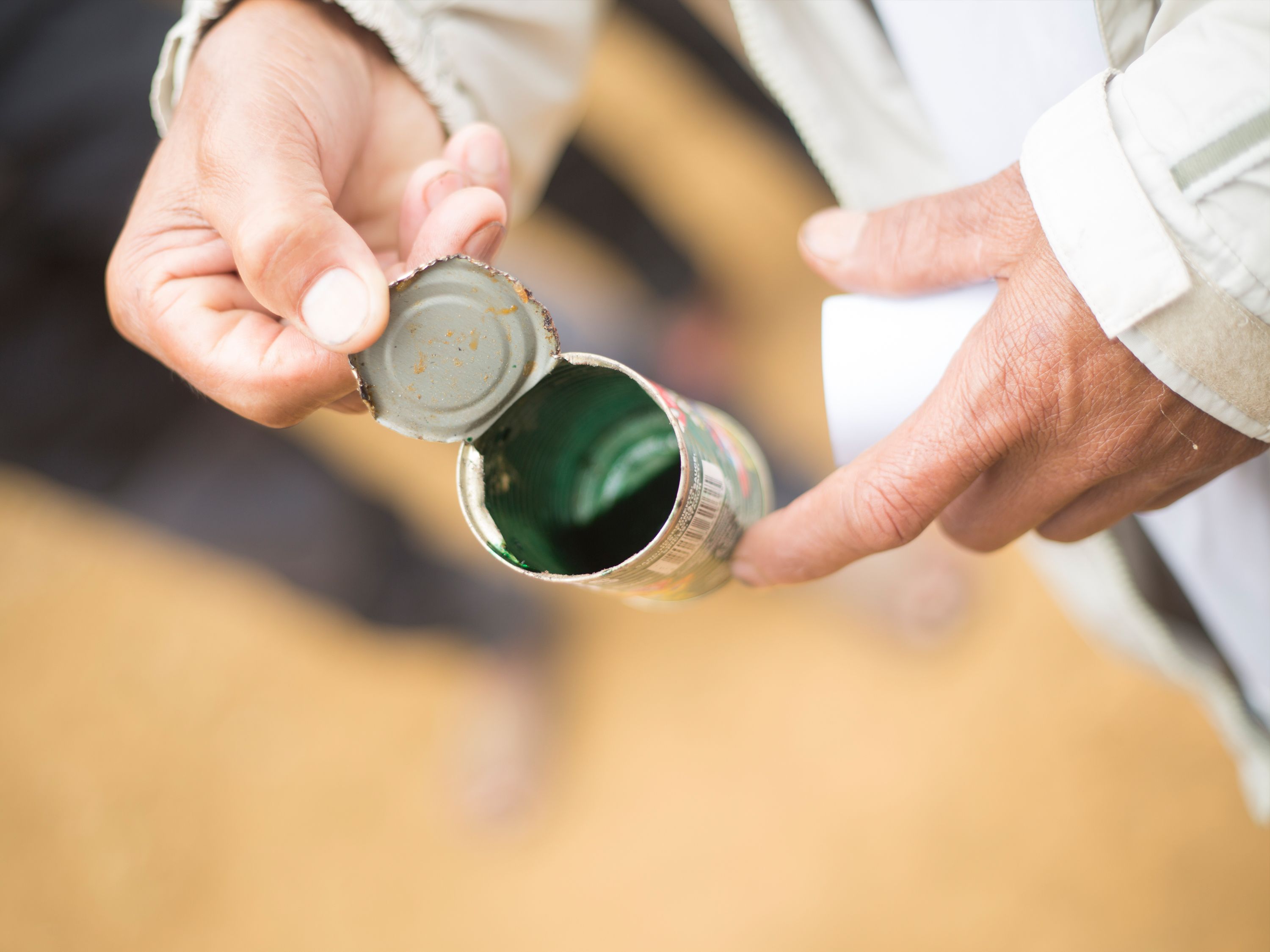The pesticides that poison farmers
Laurent Gaberell and Géraldine Viret, February 20, 2020
 ©
Atul Loke/Panos
©
Atul Loke/Panos
Our analysis of the Phillips McDougall data revealed that in 2018, 4% of the sales made by the members of CropLife International (BASF, Bayer Crop Science, Corteva Agriscience, FMC and Syngenta) , amounting to some 600 million dollars, involved substances that are highly acutely toxic to humans. These numbers are highly conservative, as the Phillips McDougall data cover only 40 % of the world market.
Syngenta, who insists that it takes very seriously the safety of its products’ users, is responsible for two-thirds of these sales. Its principal markets? Developing or emerging countries, where farmers and farm workers have neither the means nor the possibility to sufficiently protect themselves.
According to WHO estimates dating from 1990 (the most comprehensive worldwide estimates available), highly acutely toxic pesticides cause some 25 million acute poisonings annually, including 220 000 deaths. Today, this may be a considerable underestimate. “Our current research indicates that the problem is vastly greater today because of the massive increase in pesticide use in developing countries over the past 30 years,” says Meriel Watts, who is currently finalizing an analysis of published data from around the world to better estimate the number of poisonings.
-
 ©
Atul Loke / Panos Pictures
©
Atul Loke / Panos Pictures
-
 ©
Atul Loke / Panos Pictures
©
Atul Loke / Panos Pictures
-
 ©
Atul Loke/Panos
©
Atul Loke/Panos
“Made by Syngenta”
In all, 21 highly acutely toxic pesticides are among the flagship products of the CropLife International members. Ten of these fall into the top two WHO hazard classes (“extremely hazardous” and “highly hazardous”). The biggest seller is an insecticide marketed by Syngenta: lambda-cyhalothrin. Still authorized in the EU, it is classified as “fatal if inhaled” by the European chemical agency (ECHA). The European food safety authority (EFSA) requires people who handle this pesticide to wear full personal protective equipment, to keep exposure levels below the risk threshold.
In 2017, lambda-cyhalothrin was proposed for listing in an annex of the Rotterdam Convention – which establishes a system to control cross-border trade in hazardous pesticides – after the chemical was found to have caused a large number of acute poisonings of farmers in several countries, including Georgia, Tanzania and Chili. The proposal was rejected after being strongly opposed by India and, according to sources, Syngenta.
In second place is another herbicide marketed by the Swiss giant: paraquat. This herbicide has been banned in Switzerland since 1989, due to its “high acute toxicity.” In the EU, it was withdrawn from the market in 2017, following a legal decision that cited the high level of health risks. The compound is so toxic that accidental ingestion of a single sip can kill. Paraquat is regularly used in suicide attempts in developing countries, killing about half the people who ingest it. “Suicides are the best known aspect of paraquat,” said Meriel Watts. “But there are numerous cases of acute poisoning, in some cases fatal, of farmers and farmworkers that apply the herbicide without adequate protection or with faulty equipment.” Paraquat has also been linked to Parkinson’s disease.
Another problematic compound: Bayer’s beta-cyfluthrin, an insecticide classified in WHO’s highest acute toxicity categories. An EFSA study carried out in 2018 revealed that the exposures of workers in the EU exceeded acceptable levels “even with the use of protective equipment.” Yet the product continues to be used in Europe, as well as in many developing and emerging countries.
Farmers pay the highest price
“In India, pesticides rank only next to road traffic accidents as the most common cause of death,” says Dr. Ashish Bhalla, Professor of Internal Medicine and President of the Asia-Pacific Association for Medical Toxicology (APAMI). The official statistics of the government of India record 7000 deaths annually due to accidental pesticide exposure.
CropLife asserts that it is training farmers and promoting the use of protective equipment to reduce risks. But for Narasimha Reddy Donthi, director of PAN India, “It is totally irresponsible for the agrochemical giants to promote the use of such toxic pesticides in a country like India. These pesticides cannot be used safely because of poverty, lack of education and lenient application of the law.”
“The actual effectiveness of personal protective equipment is now widely disputed. What’s more, in Africa, as in most low-income countries, such equipment is often not even available on the market – because it would be unaffordable for the majority of farmers, or because in tropical or subtropical zones, it is unusable in the heat,” explains Moritz Hunsmann, researcher at the French National Centre for Scientific Research (CNRS). According to the International Code of Conduct on the Management of Pesticides, which the CropLife International members claim to implement, pesticide producers should refrain from selling products that require personal protective equipment in tropical countries.
In Brazil, where the CropLife International members sold more than half of their acutely toxic pesticides in 2018, the health ministry’s official statistics record an average of 4763 poisoning cases annually over the past three years, affecting more than 150 babies aged 0 to 12 months. “For each case reported, some 50 cases are not. We therefore have probably had more than 700 000 people poisoned in just three years,” noted Larissa Bombardi, author of the atlas of pesticides in Brazil.

Disclaimer
This text is available in three languages. In case of discrepancy between the different versions, the German text will prevail.


 ©
©